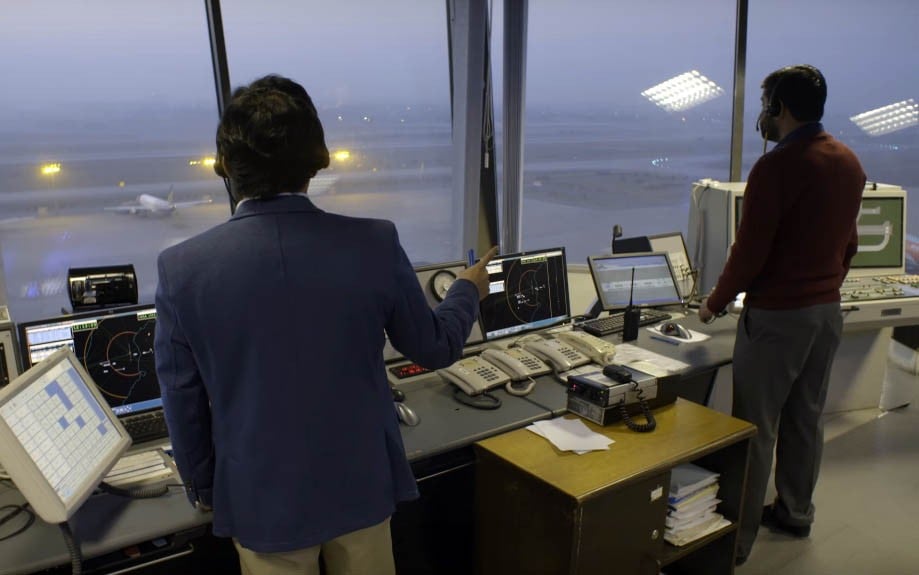
Flight cancellations and delays are a routine, on a foggy day. The million-dollar question is, whatever became of the much-trumpeted Instrument Landing System CAT III-B which was installed at the Lahore airport

A Dammam-bound PIA flight could not take off from Allama Iqbal International Airport, Lahore last week. It was eventually cancelled while another two flights -- to Jeddah and Riyadh respectively -- were delayed, causing great resentment among the passengers.
This isn’t a new phenomenon. Every year, around this time, fog brings the AIIA to a halt. Only this time things were expected to be different, as the airport had now famously been equipped with the Instrument Landing System (ILS) CAT III-B -- an internationally recognised system that "enables an aircraft to land safely even if the pilot is not able to establish visual contact with the runway." It employs transmitted radio signals to do the needful.
The system, which was installed at the AIIA in October 2015 at a subsidised cost of $25 million (actual cost being $5.4 bn), thanks to the Qatar government, was expected to ease visibility within 700 feet (200m). The Civil Aviation Authority (CAA) had hired the services of a Swedish company to help with installation. It was also believed that the system would save fuel for the airlines and improve time management, eventually leading to economic growth for the aviation industry.
So, whatever came of the entire exercise? That’s the million-dollar question everyone is asking, as the AIIA continues to be affected in the face of the fog -- or smog -- and flight cancellations and delays are the order of the day. A number of flights have recently been reported as being diverted to other airports mid-air because of poor visibility condition in Lahore.
A CAA official, requesting anonymity, reveals that more than 70 per cent flights faced disruption, delay and/or diversion over the past one year. "Improvement [on the situation] is slow. With CAA upgrading its air navigation infrastructure at the [Allama Iqbal International] airport, things might look up," he says.
Khalid Shah, another CAA official, rejects the notion that the ILS Cat-III-B is not functional at the AIIA. However, he insists that "it can’t work in isolation.
"Relevant technology is best utilised when an aircraft, which is supposed to land or take off in adverse weather conditions, is fitted in with a compatible avionics mechanism, and the pilots are sufficiently trained to use it.
"The Standard Operating Procedures (SOPs) restrict the airlines to let a plane land in 150-metre visibility, even though the ILS CAT III-B system may be in place," he adds. "Some airlines also prohibit landing in 200-metre visibility."
Under such circumstances, a smooth flow of landing and taking off in fog and/or smog cannot be ensured in totality.
"Even as everything is working in correspondence with the other -- which includes the ILS CAT III-B, the airfield, ground system, pilot training, and airline policy, it is often the pilot who decides whether to land/take off."
Muhammad Hassan Nazir, a private pilot, is of the view that Category III of the ILS allows pilots to see the runway lights only about five seconds before touchdown. "This means there is no margin for error."
He claims that many airlines and pilots have not availed the system at the AIIA.
It is said that the CAA has asked all airlines to equip themselves with the high-precision system commensurate with the latest ILS CAT III-B installed at the Allama Iqbal International Airport. They have also been asked to familiarise their pilots with the system through technical training programmes. Though, it will take time before all factors are combined to achieve the desired results.
A CAA spokesperson insists that all is good, "If a few foreign airlines were denied landing at the airport, it was because their safety standards only corresponded to visibility within 150 metres."
According to Mubeen Iqbal, Secretary, Union, CAA, "Despite efforts [by the CAA], majority of pilots are still untrained. Hence they cannot exploit the full advantage of the invaluable ILS."
A leader of the Pakistan Airline Pilots Association (PALPA) Capt Khalid Hamza says that all 777 aircrafts have been harmonised with the ILS CAT III-B. "Out of the 430 pilots that we have, 120 have been groomed on the technical front which enables them to take charge of the system."Hamza blames the CAA for undermining the capabilities of the pilots, "The issue is basically with the airline policies which allows and disallows the jets to land in varied visibility conditions."
On the other hand, a PIA official claims that all the pilots of Boeing 777 have been adequately trained to use the ILS CAT-III-B at a training simulator in Pakistan. "The rest [of the pilots] are also going to be duly trained."
After Allama Iqbal International Airport, New Islamabad International Airport is to be made ILS CAT III-B compliant. In South Asia, Pakistan is the second country, after India, to have installed this state-of-the-art navigation system. India has presently got the system at the new Indira Gandhi International Airport, New Delhi, and the Jaipur International Airport.